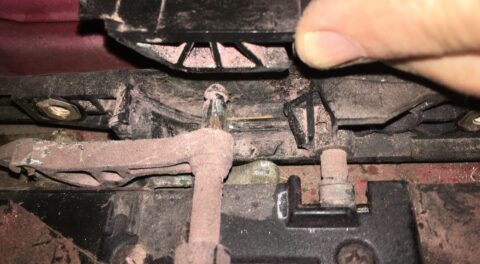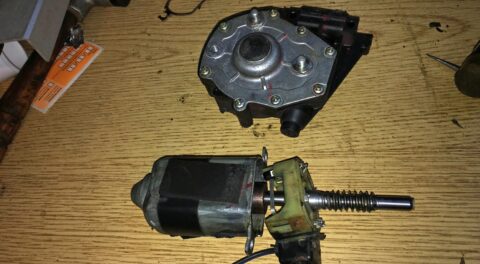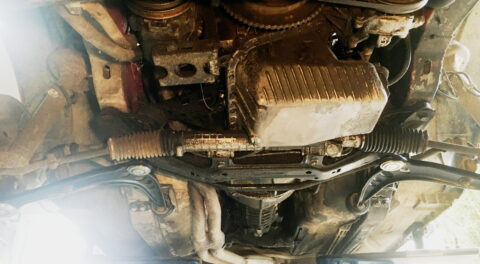Over the years I’ve devoted a fair amount of ink in Roundel—and electrons here online—to my first and second 2002s. Both were purchased during our brief stint in Austin, which lasted from 1982 through mid-1984. The first was the Inka ’71 on which my very first BMW repair was a transmission rebuild. The second was the Malaga ’72, purchased because it had air-conditioning. It carried Maire Anne and me to a hiking trip in Durango, Colorado, where we got engaged.
But I’m not sure whether I’ve ever told the tale of 2002 Number Three.
It began with much excitement and serendipity, and was full of surprises, but ultimately it’s a sad story, with an end that’s ignominious—perhaps even a touch tragic. During our time in Austin, we lived near the university, in a duplex at the intersection of Speedway and West 35th street. Across Speedway from us was an apartment complex. I noticed that parked there was a neglected, beat-up Chamonix (white) 2002. It was maybe 50 yards from our duplex; I could see it whenever I was in my driveway. As the months passed, I realized that not only was it always parked in the same spot, it never was started or moved. I suspected that it was abandoned—and began to stalk it.
After about six months of seeing zero activity at the car, under cover of darkness I tried the doors and found it unlocked. I rifled through the glove compartment and found a registration with the owner’s name and address on it; surprisingly, it wasn’t the address of the apartment complex.
I looked the owner up in the phone book (1983—no Internet) and spoke with him. It turned out that he’d sold the car the year before, presumably to the person who lived—or at least used to live—in the apartment near me, but the fellow had never titled the car in his name. In Texas, the default situation is for the plates to stay with the car, and this previous owner said he had gotten parking tickets incurred by the new owner. Because of this, he said he’d be glad to apply for a duplicate title and sign it over to me if I promised to actually register the car in my name so that he could once and for all sever his legal ties with it.
I couldn’t believe my good luck. Usually, in the purchase of a car, one reaches back to a previous owner because there’s some sort of a title issue with the current owner, and you find that either the PO can’t be found, or that he or she has zero interest in helping you. Here, his perception was that I was actually helping him.
In a few weeks, the PO had the duplicate title, signed it over to me, and I was the legal owner of the car. I prepared to drag the abandoned Chamonix 2002 the 50 yards home to my driveway with a tow rope when, just for laughs, I thought I’d jump it and see what happened.
It started. So I’d not only obtained a free 2002, but a free running 2002.
But it was a ratty, beat-up little thing, not much more than a running parts car. There were dents in nearly every body panel. The interior was completely trashed. It looked—and smelled—like the abandoned car it was. Even in the pre-digital-photo era, I was usually pretty good about snapping a few of cars that came through the premises, but this one appears to have escaped my photographic clutches; I can’t find a single picture. [The featured photo for this article is actually some other unknown Chamonix 2002.—AT]
A few weeks later, the car delivered its surprise: A rather large young man appeared at my door, pointed to the Chamonix 2002 adorning my driveway, and accused me of stealing his car—which, I have to admit, from his viewpoint, I kind of did. He explained that he’d been out of the country for nine months. I stammered out my story, and in the end I paid him a hundred bucks—well, basically, not to beat me up. I suppose it wasn’t a bad conflict resolution, as these things go.
I tinkered with the car and sorted out a few issues. I began using it as a daily driver after I bought Bertha (the ’75 2002 I still own) and was in the middle of swapping its engine with the one from the Malaga ’73 I’d just rebuilt, since both of those cars were disabled for a time. But then the car executed its grand finale.
On a foggy, rainy morning, I drove it to a nearby music store to look at guitars. (Looking on Google Maps, I’m virtually certain it was what’s now called Fiddler’s Green Music Shop, but I can’t recall what it was called then.) After I was inside for about 30 seconds, the owner and I heard a horn honking. Not tooting—this was rude, leaning-on-the-horn full-on blaring. I might have even joked with the shop owner that it was probably some jerk in a BMW. It was so loud and insistent and unremitting that we had to go outside and check.
We opened the door, stepped out into the parking lot, looked out in the rain and fog, and to my horror, I found that “some jerk” was my car! The headlights were on, the horn was blasting, and the interior of the car was rapidly filling up with smoke. I quickly opened up the hood and pulled off the negative battery terminal, which fortunately I’d left slightly loose.
As I stood with the hood up, and the windows down, I examined the damage. The forensics appeared to be that I’d left the headlights on, something shorted out, the wiring harness burned from the engine compartment to the steering column, and as part of that, the insulation burned off the horn wire and laid against the body of the car, causing the blaring.
One of the cool things about vintage cars is that you can drive them using just one wire from battery positive to the “+” or “15” terminal on the ignition coil. (Yes, you also need the negative battery cable to provide the ground path, so technically that’s two wires.) If the car is parked on a hill or you have people who can help you push-start it, that’s enough to let you pop the clutch, spin the engine, let the ignition catch, and drive the car home.
If you need to engage the starter motor, you need two additional wires: the fat battery cable from the positive terminal to the post on the starter, and a second one that you connect to the spade terminal on the starter solenoid and then touch momentarily to battery positive. I had some wire in the trunk of the ratty and now incredibly fragrant 2002, and spent a few minutes jury-rigging things up. This included disconnecting the main wire connecting the car’s electrical system to the positive battery terminal, lest I re-animate the burned wiring harness. But I soon had the car started, running, and back at 101 West 35th Street.
Even though the car still ran and drove, its burned wiring harness, coupled with the car’s horrid overall condition, sealed its fate. I pulled a few parts off it to help with the Malaga-to-Bertha engine swap and the sale of the Malaga car, then sold it as a parts car shortly before we moved back to Boston.
I suppose that if the ratty Chamonix 2002 has a legacy, it is three-fold: I still tend to leave the negative battery cable on my vintage cars slightly loose, and I am very careful to be certain I’ve shut the lights off when parking a vintage BMW. And if I hear a car horn blaring when I’m inside a store, I accept the possibility that it could be mine.—Rob Siegel
Rob’s new book, Just Needs a Recharge: The Hack MechanicTM Guide to Vintage Air Conditioning, is available here on Amazon. His previous book Ran When Parked is available here. Or you can order personally inscribed copies of all of his books through Rob’s website: www.robsiegel.com. His new book, Resurrecting Bertha: Buying Back the Car My Wife and I Drove Off From Our Wedding, will be released in the fall.






















